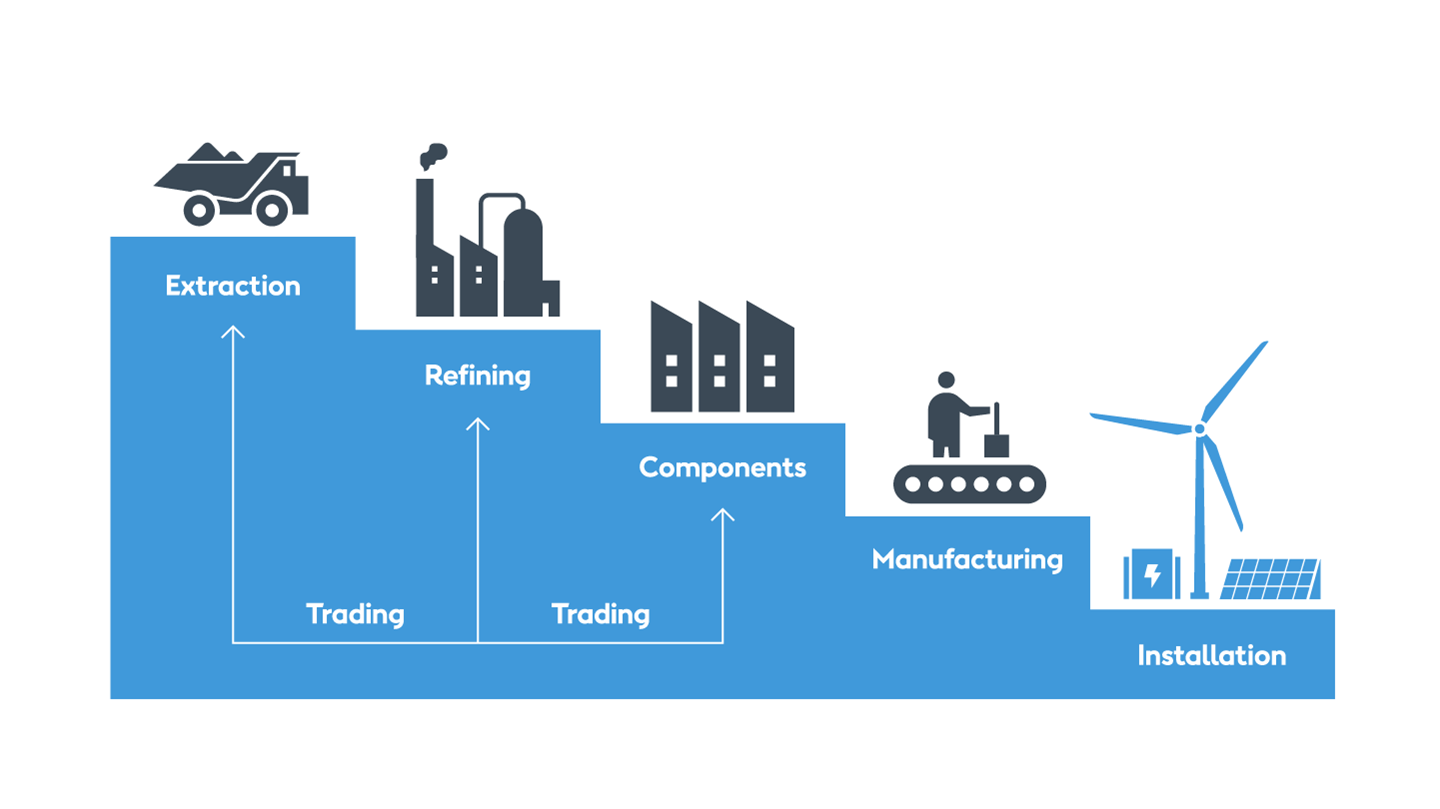What we’re doing: the Ørsted Metals and Minerals Programme
Supply chains tend to be long and complex. If we are to address any risks, we need to work together with other stakeholders, not only across the renewable energy sector, but also in other sectors.
This is why, in 2021, we developed the Ørsted Metals and Minerals Programme. The programme is scoped around ten metals that end up in our turbines, foundations, cables, components, solar panels or energy storage systems. These metals are cadmium, cobalt, copper, iron, lithium, manganese, nickel, rare earth metals, silicon, and tellurium.
The work in the Metals and Minerals Programme has three strategic pillars.
- Supplier engagement
Twice a year we talk with our key first-tier suppliers, to align our supply chains with the OECD Due Diligence Guidance for Responsible Supply Chains of Minerals from Conflict-Affected and High-Risk Areas. This means we’re asking suppliers to ensure they have strong company management systems and to identify and address any social and environmental risks in the supply chains.
- Supply chain transparency
To increase transparency on the origins of the metals we use, we’re working with suppliers to map our individual supply chains. We’re also working with industry associations to create more transparency in general, including by creating a ‘chain of custody’ system in which the origin of metals can be certified.
- Industry partnerships
We’re raising the topic with our partners and in industry groups such as WindEurope, which brings together all large developers and original equipment manufacturers for wind energy in Europe. Furthermore, we were the first energy company to join the Initiative for Responsible Mining Assurance (IRMA). This gives us the opportunity to learn from end-users in, for example, the electronics and automotive industries, who have been facing similar issues for a longer period.
Our commitment
Engaging with our suppliers and industry partners has shown us that there is momentum to address risks relating to the mining of the metals and minerals that fuel the renewable energy transition.
However, it has also brought home to us the full extent of the challenge. We are committed to taking on this challenge and to working together with others to ensure that the growth of renewable energy is beneficial, and sustainable, for all those involved.
